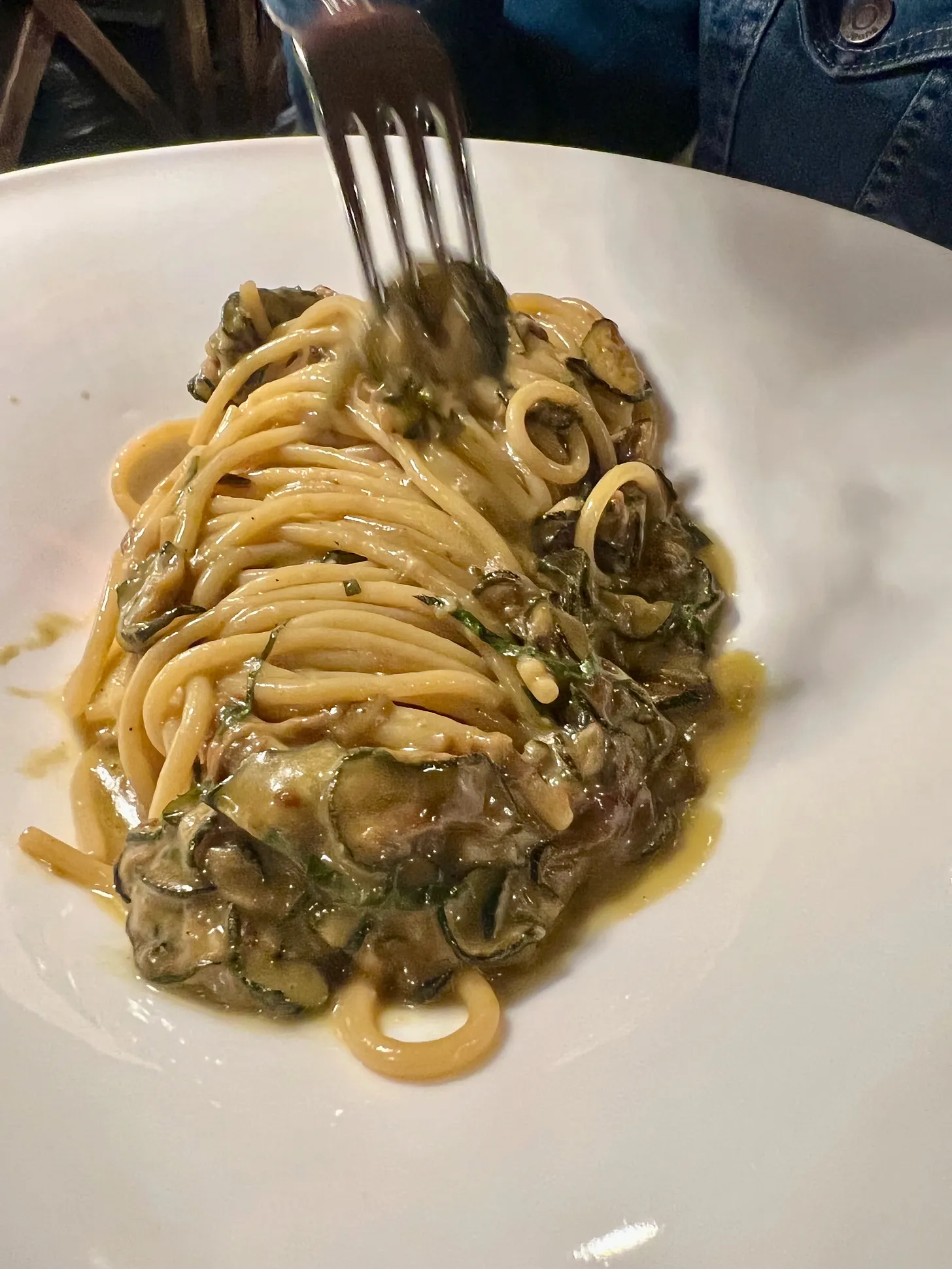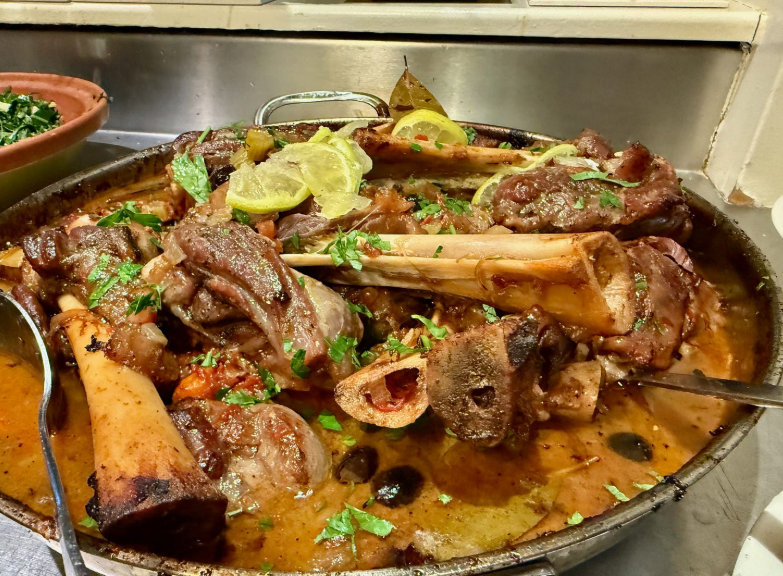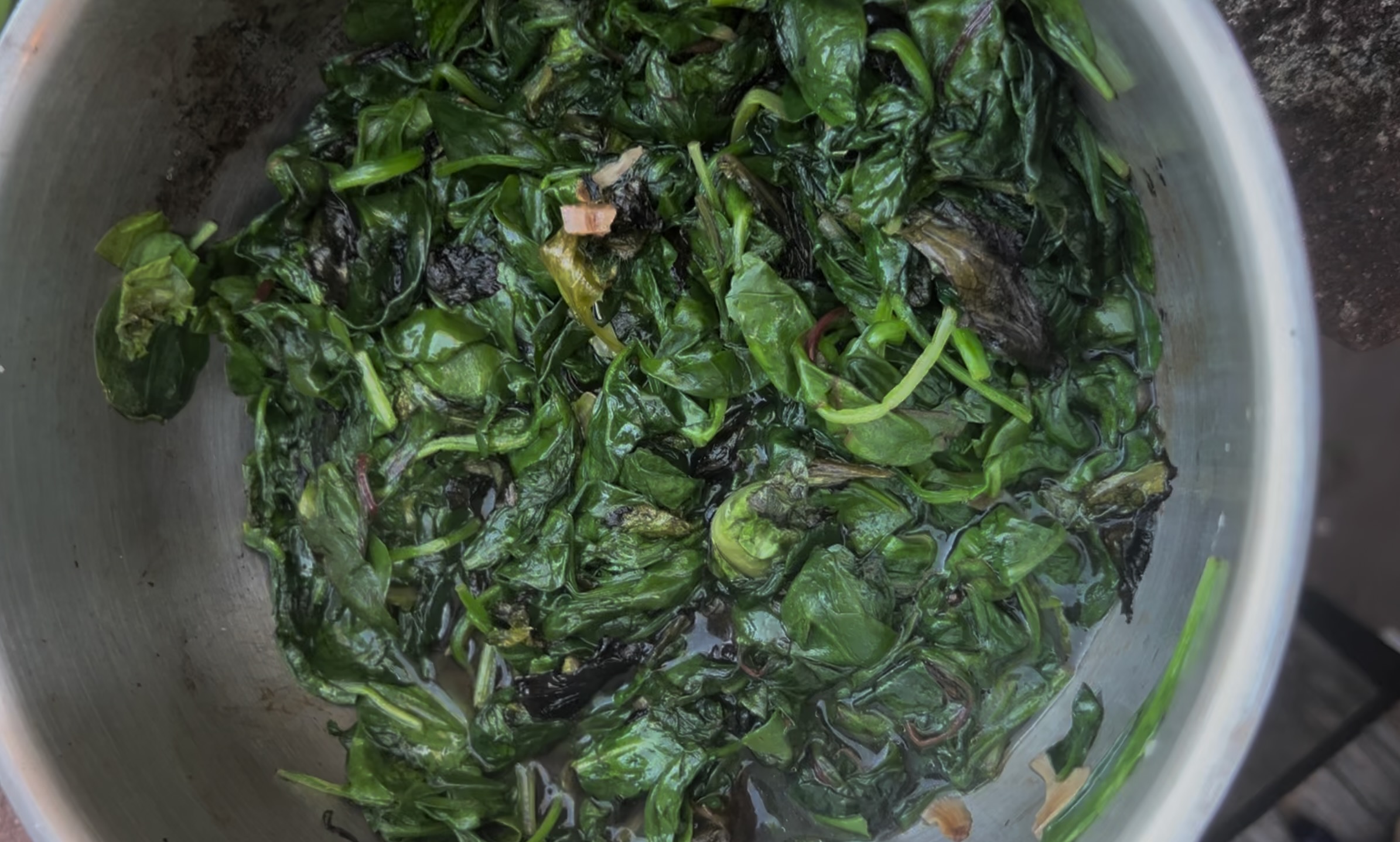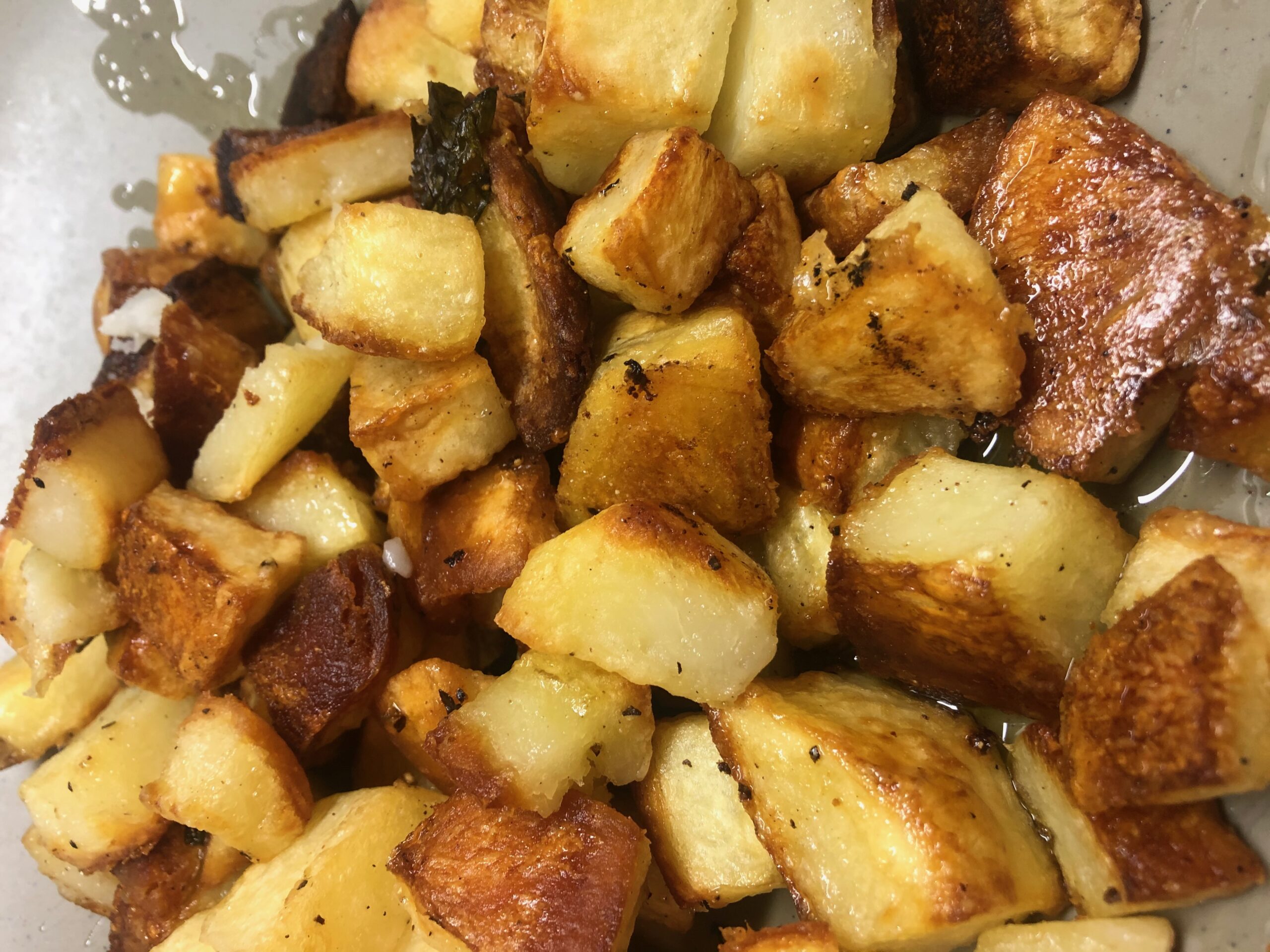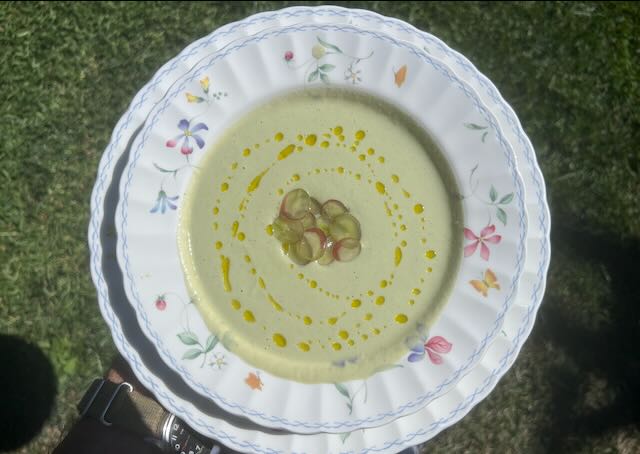Through the miracle of QR codes, I’ve made this explainer for people stopping to take in the beauty of our front yard.
When we bought this home 29 years ago, a plain lawn covered the entire front yard and parkway. We ripped it up, amended the soil, put in drip irrigation, and planted, over the years, what you see here:
- There are 72 artichoke plants of different varieties. Green Globe, Imperial Star, Violetto, Romagna (the purple ones), and others.
- Lavender
- Rosemary
- California Poppies
- Lemon verbena
- Pomegranate
- Frantoia olive
- Mission olive
- Blood orange
- Donut peach
- Limon
- Turkey Fig
That’s a Mission olive tree near the window, and to your right is a pomegranate tree. To the left are two chaste liliac trees whose purple flower cones bloom in mid-spring.
By the driveway is an area that we didn’t replant. Towering above it is a Brazilian silk floss tree, which produces striking pink flowers that give way to papaya-sized seed pods filled with natural fiber called kapok. Before synthetics, kapok was a common stuffing for winter jackets.
On the far right side is a garden we planted during the pandemic: a Meyer lemon, Moro blood orange, Mexican lime, and Donut Peach tree, along with chard, Italian dandelion, fava beans (in spring), purslane, and strawberries.
In the parkway is a 20-year-old Haas avocado, a brown fig, and a large Frantoia olive.

We compost and drip irrigate. In months that don’t drop rain, we have four cisterns for rainwater and use a kitchen sink insert to catch wastewater there. Look closely and you’ll see the rosemary and lavender keep the neighborhood bees very busy.
The artichoke buds in late spring and again in late summer. The edible parts are actually the unopened thistle buds. Each plant yields one large bud at the top (this is what you usually see in markets) and many smaller ones. Occasionally, we allow a few plants to flower– if you see one of those, feel free to smell it.
After they produce, we cut the artichoke plants down and allow them to regrow. This causes them to multiply, at least by two, so most of the plants you see here have been part of the family for years.
In a good year, we get about 150 pounds of artichokes each season. This translates to a tablespoon of actual artichoke flesh. That’s a joke. But we do easily manage to eat or share them all. You can find recipes from the garden in my newsletter, Instagram @foodaism, and foodaism.com.
From the leaves, I also make artichoke bitters, which are great for an upset stomach, and an Italian apperitivo combining the bitters with other plants from the garden: Meyer lemon, bay leaf, lemon verbena, plus alcohol and sugar.
Meanwhile, please feel free to photograph (#foodaism if you post) and DM me @foodaism for any questions.
Love food, culture, and stories that feed the soul?
Join the Foodaism Weekly Newsletter — a thoughtful digest of essays, recipes, and food writing that goes deeper than the plate.
Get exclusive content you won’t find on the blog, delivered fresh every week.
Subscribe Now — it’s free, easy, and always nourishing!
Don’t just eat. Understand.

